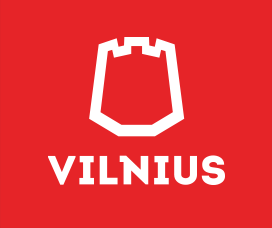Dr. Mangirdas Malinauskas “Laser 3D Mesoscale Printing: From Renewable Organics to Crystalline Inorganics”, Vilnius University
Prof. Gerd Buntkowsky “Solid-State-NMR Characterization of functional Materials”, Technische Universität Darmstadt
Prof. Mattias Hammar “Nanostructured semiconductor optoelectronics”, KTH Royal Institute of Technology
Prof. Sigitas Tamulevičius “2D Nanoparticle Based Nanostructures – Technology and Applications”, Kaunas University of Technology
Dr. Laima Trinkler “Luminescence of LiGaO2 crystal – mechanisms and potential application”, Institute of Solid State Physics, University of Latvia
Prof. Eugenijus Norkus “Achievements in the Area of Electroless Metal Deposition”, Center for Physical sciences and technology
Prof. Robert Evarestov “First-principles study of pressure-induced insulator-to-metal transition in 2D layered compound FePS3”, Saint Petersburg State University
Prof. Qin Wang “Graphene based nanostructures and nanoparticles for sensing applications”, Research Institutes of Sweden AB (RISE)
Dr. Karol Frohlich “Preparation and performance of photoanode with thin RuO2- and IrO2-RuO2-based oxide electrocatalysts for water splitting”, Slovak Academy of Sciences, Institute of Electrical Engineering
Dr. Gunnar Nurk “Operando NAP-HT-XPS and impedance spectroscopy study of pulsed laser deposited Ni-Ce0.9Gd0.1O2-d solid oxide fuel cell electrode”, University of Tartu
Dr. Maxim Ananyev “Surface defect chemistry and ionic transport in oxides with perovskite related structure”, Institute of High Temperature Electrochemistry
Prof. Gintautas Tamulaitis “Response time as the key functional property of future scintillation materials”, Vilnius University
Prof. Anders Hallen “Silicon Carbide Material Development for Semiconductor Power Devices”, KTH Royal Institute of Technology
Dr. Andrei Salak “Field-assisted formed nanostructures of multifunctional 2-D anion exchangers”, University of Aveiro
Prof. Aleksandr Lushchik “Accumulation and annealing of structural defects in wide-gap metal oxides under intense radiation of different types”, University of Tartu
Prof. Jiri Kulda “What is hidden in the background of Bragg diffraction. Diffuse scattering and PDF analysis not only with neutrons”, Institut Laue-Langevin




